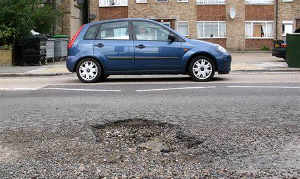Why complex cars create costly problems

An acute shortage of semiconductors is a big contributor to rising auto claims costs for auto insurers.
“That’s had a significant impact in certain types of cars,” says Paul Gilbody, president of ClaimsPro Canada.
“A huge amount of electronics now goes into more [vehicle] parts, particularly in higher-end cars. You’ve got cameras. You’ve got sensors. And that obviously requires electronics, including semiconductors.”
Any shortage of parts means longer repair times — and costlier claims — for insurers.
“There’ve been examples in which cars have sat in a shop waiting for a pretty mundane part to be delivered. It has been on backorder for a month [or] six weeks. If that individual has one of the more flexible or generous policies, then they’re going to be in a rental car at $400 a day for six weeks,” he adds.
Supply chain consequences
With delays like that, it’s not long before backlogs cost real money, and those costs filter through to insurance premiums.
“The cost pressure on insurers throughout that value chain has been immense,” says Gilbody. “We had someone who just had a door mirror knocked off and it took about three months [to replace].
“They’ve got the sensors for overtaking the blind spot. They’ve got heating. They’ve got the electric movement. What used to be just a mirror is now quite a complicated thing.”
Plus, supplies of these components are prioritized for use on assembly lines, not repairs. High demand for new vehicles means parts producers must send components to automakers’ factories first, rather than to repair shops.
“That’s preventing spare parts from getting into the system,” says Julian Bugeja, senior vice president of NFP Canada’s private client group. “And that’s going to continue to be the priority for the parts manufacturers.”
Claims cost numbers tell a story of ongoing price hikes. Canadian data from auto software company and data tracker Mitchell International found the average claim cost for all vehicle types has risen by more than $1,000 over the past four years — from $3,988 in 2020 to $5,132 during the first 11 months of 2023 (the latest figures available). The sharpest single-year jump took place between 2021 and 2022 — climbing from $4,180 to $4,749.
Repair costs vary by vehicle type. For example, Mitchell’s 2023 Q3 data puts the ‘average repairable severity’ at $4,857 for a passenger car, $5,840 for a pickup truck, $5,152 for a common-make SUV, and $6,735 for a luxury marque SUV, such as BMW, Lexus, Audi or Maserati.
That’s an appreciable climb from 2021 Q1 averages of $3,582 for passenger cars, $4,099 for pickup trucks, $4,223 for common-make SUVs and $6,306 for luxury sport utility vehicles.
Coping with losses
To manage loss ratios, insurers are putting upward pressure on premiums and removing features from some policies. The changes vary by company, Gilbody notes. They may include less-generous payouts, more deductibles, and fewer rental days available as part of the policy or as an option.
Those changes have many consumers shopping. Industry sources indicate online portals and direct writers are having some impact on rate pressure by bringing competition into the market, but that’s generally not offsetting the cost hikes consumers are experiencing.
“Another aspect of the consumer angst over rate hikes stems from perception,” Gilbody says. “During the early part of the COVID-19 pandemic, insurers offered deductions and rebates to many policyholders in recognition of the fact that many weren’t using their cars very much.
“A lot of people have relatively short memories about that kind of thing. We’ve seen that those deductions and discounts [are] moving away, which has probably increased the premiums at the same time as inflation is having an impact on all the other financial factors clients face.”
To help clients cope, brokers can suggest exploring deductible increases, which also shifts some costs away from the insurers.
“That helps mitigate and reduce [premium] expense because now the client is taking on more of a cost when it comes to a claim,” says Bugeja. “Unfortunately, claims are going up which is also driving the rates across the board.”
This article is excerpted from one appearing in the February-March 2024 print edition of Canadian Underwriter. Feature image courtesy of iStock.com/A_Columbo




